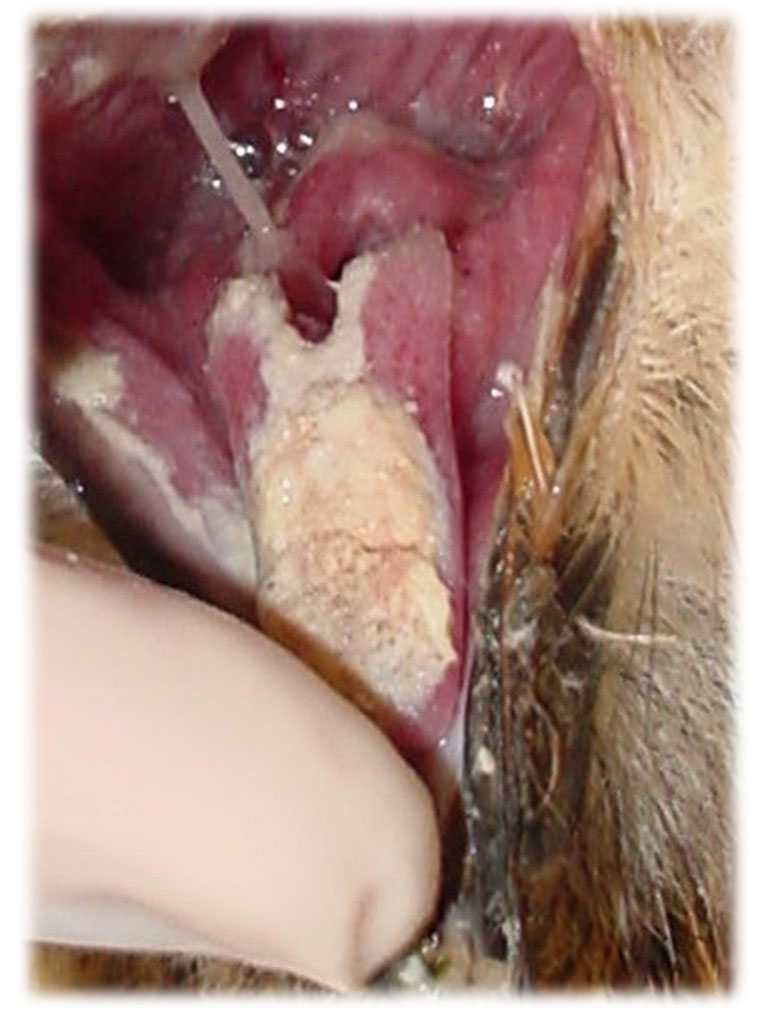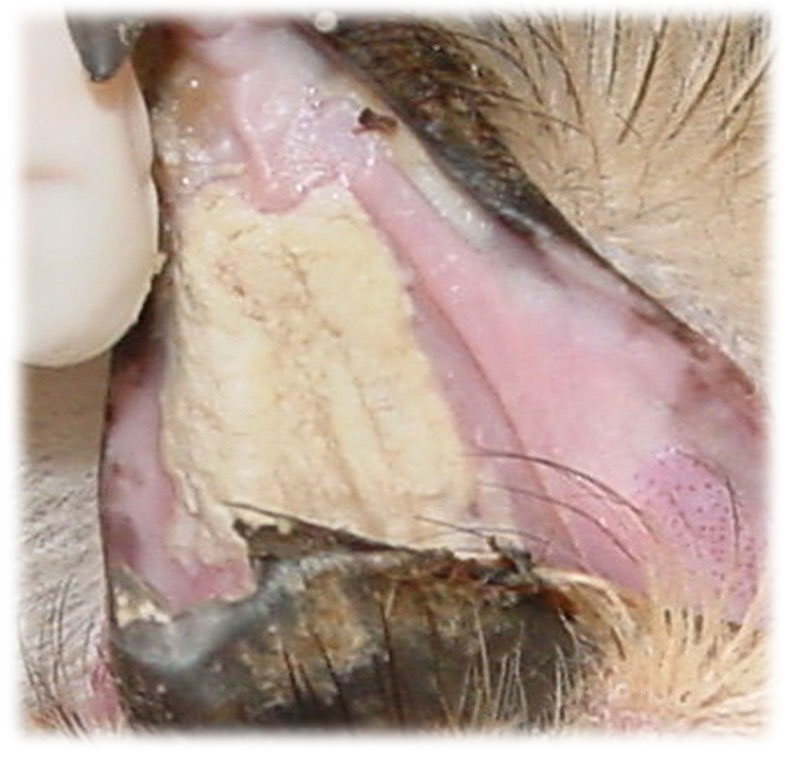 |
Frounce plaques on the tongue and lower mandible of a Great Horned Owl.
Photo courtesy of Eileen Wicker of Raptor Rehabilitation of KY Inc |
 |
Frounce plaques on the upper mandible.
Photo courtesy of Eileen Wicker of Raptor Rehabilitation of KY Inc |
Flagyl, Spartrix, Metronidazole, Entramin, Emtryl, or Carnidazole (or, less preferred, Enheptin) are typically prescribed for this. One common treatment now is to treat the bird with 25 - 50 mg/Kg of Metronidazole twice a day for 7 - 10 days. A single 250 mg tablet can be dissolved in 10 cc water. A 600 g bird can then be given 1 cc per day of this mixture. Another approach is to, basically, address the infection with a single dosage of 125 mg per kg of bird weight. The infection plaques will die and expose raw skin will need to be protected from any other infection. Plaques in the throat may necessitate smaller bites or food more easily swallowed.
Birds who are untreated usually succumb to Frounce within 7 - 10 days.
Becky Brunotte recently had a particularly bad encounter with Frounce in her bird. Her comments on the end of the ordeal: "I took the bird in to see the vet today because the frounce had gotten so large it was shutting off her air passage and she couldn't eat again. The vet removed the frounce pellet and the good news was that the frounce hadn't damaged her sinuses. But the bad news is that the frounce ate away one of the bones that runs on each side of the glottis. It was embedded in the frounce pellet. The frounce is out, but to be safe I'll treat her one more time with Spartrix."
She was kind enough to allow me to use the picture of the frounce pellet. You can barely make out the hyoid bone in this pellet. The hyoid in the bird is a Y shape. It is the attachment site for throat and tongue muscles allowing control of swallowing. The bird will function normally after is retrains its muscles to function without that part of the hyoid.